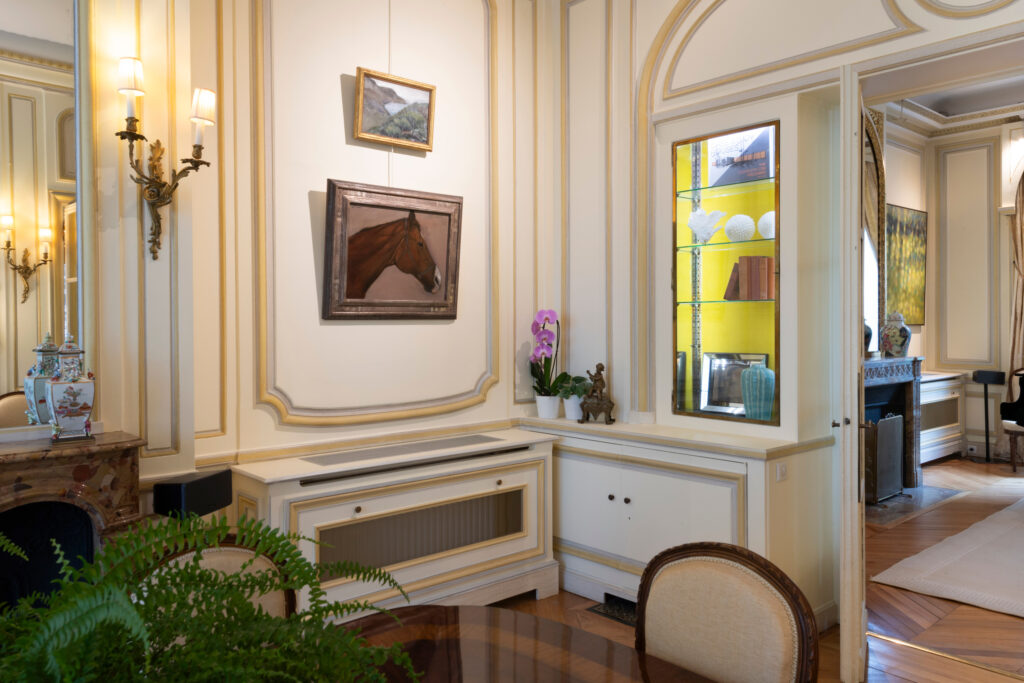Clarice Smith’s Paintings Featured in “American Art Accelerating Democracy” Exhibition at U.S. Embassy Residence in Paris
The U.S. Department of State’s Office of Art in Embassies and U.S. Ambassador to the Organization for Economic Cooperation and Development Sean Patrick Maloney announce the opening of a special exhibition, The Art in Embassies Collections Exhibition: American Art Accelerating Diplomacy, with French and American cultural leaders at the historic Weber House in Paris.

During each four-year presidential cycle, nearly 200 new American ambassadors are appointed to represent the United States around the world. Ambassadors work with Art in Embassies to create custom exhibitions for their residences with loaned or gifted works. “American Art Accelerating Diplomacy” is curated entirely from new special collections lent by U.S. cultural leaders dedicated to advancing art diplomacy. These special Art in Embassies Democracy Collections are large groups of works under long-term blanket loans, allowing renowned American artworks to be immediately available for ambassador residence art exhibitions around the world.

“I see firsthand how the art exhibition in this residence drives conversations, inspires ideas, and sparks connection,” Ambassador Maloney said. “It is humbling, to think this critical program has survived for over sixty years relying on the generosity of lenders and artists who share their talents and artworks to support U.S. cultural diplomacy through these important exhibitions. This exhibition at the Weber House is our way of saying thanks.”
“Democracy is not a spectator sport, and the lenders of these Democracy Collections have jumped in to help tell unique American stories of diversity, immigrant tenacity, and deeply ingrained values of equality,” said Megan Beyer, Director of Art in Embassies. “As you take in this exhibition, the American story is everywhere.”

Megan Beyer, Director, Art in Embassies and Debra Dunn, President, French-American Cultural Foundation (L-R)
“American Art Accelerating Democracy,” like all Art in Embassies exhibitions, is only possible because of the generosity of cultural partners. The Wolf Kahn Collection offers works by Kahn, who as a young Jewish boy in Germany escaped by Kindertransport to ultimately reside in the United States; the Gene Davis Estate Collection includes his signature, large-scale classic striped paintings from the sixties and smaller paintings from his pre-stripe era; the Creative Growth Collection features works by artists with developmental disabilities; the Fred Jones Jr. Museum of Art Collection at the University of Oklahoma provides twentieth-century American paintings depicting the American Southwest; and in partnership with the American Academy in Rome, the exhibition features two paintings by Chuck Close, whose work was associated with his neurological, developmental, and physical challenges.

The family of one exhibition artist made this special exhibition possible. David Bruce Smith, President, Grateful American Foundation, the son of artist Clarice Smith, was the first to offer artworks under these special long-term loans. The Clarice Smith Collection consists of works that reflect her life. A painter from Virginia, Smith spent significant time in France and was a devout advocate for cultural diplomacy. Her paintings depict the verdant Provence, stunning Riviera, and life in the Virginia countryside. Like tens of thousands of artists across America, her loaned paintings have helped to keep Art in Embassies alive for over sixty years.
Photographs by Chantal Mistral
About OECD
The OECD (Organization for Economic Cooperation and Development) is a forum and knowledge hub for data, analysis, and best practices in public policy. OECD works with over 100 countries across the world to build stronger, fairer, and cleaner societies–helping to shape better policies for better lives.
About Art in Embassies
Envisioned by the Museum of Modern Art in 1953 and formalized by John F. Kennedy a decade later, Art in Embassies is an official visual arts office within the U.S. Department of State. For six decades, Art in Embassies has played a leading role in U.S. public diplomacy through a focused mission on generating cross-cultural dialogue through exhibitions, permanent collections, site-specific commissions, and two-way artist exchanges at more than 200 U.S. embassies, consulates, and partner institutions around the world.
Art in Embassies showcases the innovation and cultural prowess of the United States and fosters cross-cultural connections. Each ambassador representing the United States in each nation has their own custom-curated exhibition to support their specific diplomatic agenda.